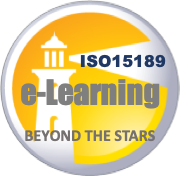1.0-1 Overview
Illuminating the Path to ISO 15189 (SLMTA 3) e-Learning Course Download Video
- Overview
- Resources
Management responsibility requires a commitment to quality and making a quality management system (QMS) a strategic goal. Because a QMS is comprised of numerous interrelated or interacting processes, the standard encourages a process-based approach (i.e. the identification and interactions of these processes and their management). In QMS 1, participants will learn about the process approach and how to manage processes through the use of quality tools.
References
Apondi, H. (2017, January 14). Protect The Vital Few From The Trivial Many (The Pareto Principle). Retrieved from https://medium.com/@apondihazel/protect-the-vital-few-from-the-trivial-many-the-pareto-principle-7f5...
Arter, D. R., Cianfrani, C. A., & West, J. E. (2003). How to Audit the Process-Based QMS. Milwaukee: American Society for Quality, Quality Press.
Berte, L. M. (2009, May). Quality Qorner - Lingo Lession. Lab Medicine, 40(5), 2. Retrieved from Lab Med QQ May 2009
Berte, L. M. (2009, Novemeber). Quality Qorner - Who is the Customer? Lab Medicine, 40(11), 2. Retrieved from QQ Nov 09 Who is Customer Part 1
Berte, L. M. (2009, December ). Quality Qorner - Who is the Cutomer? Lesson Two. Lab Medicine, 40(12), 708. Retrieved from QQ Dec 09 Who is Customer Part 2
Berte, L. M. (n.d.). How Do You Know How Well You Are Doing?: Quality Indicators for Measuring Laboratory Performance.
Berte, L. (n.d.). Understanding Why “PROCESS” is the Essential Key for Lean and Other Quality Tools to Continually Improve Your Lab’s Efficiency, Cost Effectiveness, and Profitability. Retrieved January 15, 2019, from https://www.labqualityconfab.com/wp-content/uploads/Berte.TUE_.4pm_FINAL.pdf
Bio-rad Laboratories. (2013). Looking Ahead to Patient Risk Management. Bio-rad Laboratories, Inc.
Burnett, D. (2013). A Practical Guide to ISO 15189 in Laboratory Medicine. London: ACB Venture Publications.
Clinical and Laboratory and Standards Institute (CLSI). (2011). EP23-A: Laboratory Quality Control Based on Risk Management; Approved Guideline (Vols. 31, No. 18). Wayne: Clinical and Laboratory Standards Institute.
Clinical and Laboratory Standards Institute (CLSI). (2004). A Quality Management System Model for Health Care; Approved Guideline (HS1-A2) (2 ed., Vol. 24). Wayne, PA: Clinical and Laboratory Standards Institute.
Clinical and Laboratory Standards Institute (CLSI). (2004). Application of a Quality Management System Model for Laboratory Services: Approved Guideline (GP26-A3) (3 ed., Vol. 24). Wayne, PA: Clinical and Laboratory Standards Institute.
Clinical and Laboratory Standards Institute (CLSI). (2004). Continuous Quality Improvement: Integrating Five Key Quality System Components; Approved Guideline - Second Edition (GP22-A2) (2 ed., Vol. 24). Wayne, PA: Clinical and Laboratory Standards Institute.
Clinical and Laboratory Standards Institute (CLSI). (2006). Laboratory Documents: Development and Control; Approved Guideline GP2-A5 (5 ed., Vol. 26). Wayne, PA: Clinical and Laboratory Standards Institute.
Clinical and Laboratory Standards Institute (CLSI). (2010). Development and Use of Quality Indicators for Process Improvement and Monitoring of Laboratory Quality: Approved Guideline (QM12-A). Wayne, PA: Clinical and Laboratory Standards Institute .
Clinical and Laboratory Standards Institute (CLSI). (2010). GP33-A: Accuracy in Patient and Sample Indentification; Approved Guidelines. Wayne: Clinical and Laboratory Standards Institute .
Clinical and Laboratory Standards Institute (CLSI). (2011). Quality Management System: Continual Improvement; Approved Guideline (QMS06-A3) (3 ed.). Wayne, PA: Clinical and Laboratory Standards Institute.
Clinical and Laboratory Standards Institute (CLSI). (2012). Quality Management System: Leadership and Management Roles and Responsibilities; Approved Guideline (QMS14-A). Wayne, PA: Clinical and Laboratory Standards Institute .
Clinical and Laboratory Standards Institute (CLSI). (2013). Laboratory QMS Certificate Program Module: QSE Continual Improvement.
Clinical and Laboratory Standards Institute (CLSI). (2013). Laboratory QMS Certificate Program Module: QSE Organization. CLSI U.
Clinical and Laboratory Standards Institute (CLSI). (2013). Laboratory QMS Certificate Program Module: QSE Process Management.
Clinical and Laboratory Standards Institute (CLSI). (2013). QMS02-A6: Quality Management System: Development and Management of Laboratory Documents; Approved Guideline (6 ed.). Wayne: Clinical and Laboratory Standards Institute.
Clinical and Laboratory Standards Institute (CLSI). (2013). Quality Management System: Development and Management of Laboratory Documents; Approved Guideline (QMS02-A6) (6 ed.). Wayne, PA: Clinical and Laboratory Standards Institute (CLSI).
Clinical and Laboratory Standards Institute (CLSI). (2015). Process Management (QMS18). Wayne, PA: Clinical and Laboratory Standards Institute (CLSI).
Cochran, C. (2003). The Continual Improvement Process: From Strategy to the Bottom Line. Chico, CA: Paton Press LLC.
Cochran, C. (2010). Problem Solving in Plain English. Chico, CA: Paton Press LLC.
Cochran, C. (2015). ISO 9001:2015 In Plain English. Chico, CA: Paton Professional LLC.
COLA. (2015, May 15). How to Verify Performance Specifications. LabGuide 13. Retrieved August 18, 2018, from http://www.cola.org/wp-content/uploads/2016/08/LG132015.pdf
Cooper, G., & Trudy , G. (2007). Producing Reliable Test Results in the Medical Laboratory: Using a Quality Managment System Approach and ISO 15189 to Assure the Quality of Laboratory Examination Procedures. Irvine, CA: Bio-rad Laboratories.
Cooper, W. G. (2016, July 20). Lab Management. Retrieved from MLO: www.mlo-online.com/resolving-qc-failures
Current Laboratory Practice Series: Laboratory Quality Management System Training Toolkit [CD-ROM]. (2009). World Health Organization.
Dark Intelligence Group, Inc. (2011). ISO 15189 Medical Laboratories: Understanding the Four Components of a Quality Management System.
Datema, T. A., Oskam, L., & Klatser, P. R. (2011, December 11). Review and comparison of quality standards, guidelines and regulations for laboratories. African Journal for Laboratory Medicine, 1(1), 7 pages. Retrieved from dx.doi.org/10.4102/ajlm.v1i1.3
Dawson, J. (2015, July-August). Navigating ISO 15189. Retrieved from MedicalLab Management: https://www.medlabmag.com/article/1201/?search=navigating%20ISO%2015189
Dawson, J. (2017, August 29). Lean Six Sigma is Not Quality. Retrieved from G2 Intelligence: https://www.g2intelligence.com/lean-six-sigma-is-not-quality/
DiMaria, J. (n.d.). ISO 9001:2015 What are the changes? Retrieved May 6, 2016, from http://bsi.learncentral.com/aicc/9kChanges2016US/index_lms.html
Draft International Standard ISO/DIS 9001 . (2014). ISO/TC 176/SC 2. Geneva: International Organization for Standardization.
Epstein, H. M. (2019, January 8). Dx IQ Column #1—The most important medical issue ever: And why you need to know more about it. Retrieved from Society to Improve Diagnosis in Medicine: https://www.improvediagnosis.org/dxiq-column/most-important-medical-issue-ever/
Health Research & Educational Trust. (2018, September). Improving Diagnosis in Medicine Change Package. Chicago, Illinois: Health Research & Educational Trust. Retrieved from http://www.hret-hiin.org/
Hill, E. (2018, August). The Role of Six Sigma in a Modern Quality Management Strategy. Medical Laboratory Observer (MLO), pp. 46-47.
Institute for Quality Management in Healthcare (IQMH). (2014). Decoding ISO 15189 Interactive Online Education Series: Module 5 - The Quality Manual.
Institute for Quality Management in Healthcare (IQMH). (2014). Decoding ISO 15189 Interactive Online Education Series: Module 6 - Process Maps and Procedures.
Institute for Quality Management in Healthcare (IQMH). (2014). Decoding ISO 15189 Interactive Online Education Series: Module 9 - Quality Indicators.
International Organization for Standardization (ISO). (2012). ISO 15189: 2012 Medical laboratories -- Requirements for quality and competence.
International Organization for Standarization. (2015). Quality Management Principles. Geneva , Switzerland. Retrieved January 4, 2019, from https://www.iso.org/files/live/sites/isoorg/files/archive/pdf/en/pub100080.pdf
ISO 9001:2015 Part 1: Prepare for Impending Changes. (n.d.). Retrieved March 5, 2016, from Master Control: http://www.mastercontrol.com/downloadables/customervideos/standalone.html?c=128
ISO 9001:2015 Part 2: New QMS Structure Overview. (n.d.). Retrieved March 6, 2016, from Master Control: http://www.mastercontrol.com/downloadables/customervideos/standalone.html?c=137
ISO 9001:2015 Part 3: Risk-based Thinking Goes from Implicit to Explicit. (n.d.). Retrieved March 6, 2016, from Master Control: http://www.mastercontrol.com/downloadables/customervideos/standalone.html?c=145
Juran's Trilogy. (2009, April 9). Retrieved from Quality World: http://gurujuran.blogspot.com/2009/04/jurans-trilogy.html
LabCoP ECHO Session Resource. (2018, June). LARC 2.0 Quality improvement Collaborative Workbook. Retrieved from click here
Makary, M. A., & Daniel, M. (2016). Medical error—the third leading cause of death in the US. BMJ, 353 :i2139 .
McKinney, B. C. (n.d.). Quality Improvement: Applications for the Viral Load Cascade.
New York State Department of Health, Wadsworth Center. (2010). Guidance for Implementing a Laboratory Quality Management System.
Noble, M. (2018, January 2). Fit for Process versus Fit for Purpose. Retrieved from Making Medical Lab Quality Relevant: http://www.medicallaboratoryquality.com/2018/01/
Noble, M. (2019, February 4). GB/T32230: Quality Culture and the Medical Laboratory. Retrieved from Pendergraph, G. E., & Gruber, E. J. (2012). Risk Management in the Clinical Laboratory. MediaLab, Inc.
Smith, C. A. (n.d.).Promoting High Reliability on the Frontline. Retrieved from American Nurse Today:
UK Essays. (2013, November). The Eight Principles Of Quality Management Principles Management Essay. Retrieved January 4, 2019, from ukessays.com/essays/management/the-eight-principles-of-quality-management-principles-management-essay.php?vref=1
Vetter, L. P. (2006, July). A Laboratory Management Primer. Lab Medicine, 37(7), 397-403.
Westgard, J., & Westgard, S. (2015, June 10). Simplifying ISO 15189: The Real-world Impact to Laboratory Quality Management. Retrieved from Thermo Fisher Scientific: www.thermofisher.com/us/en/home/clinical/diagnostic-testing/quality-controls-assurance-program/quali...
Westgard, S. (2016, February). Quality Goals at the Crossroads: Growing, Going, Gone? Retrieved from Westgard QC: www.westgard.com/gone-goals-gone.htm
World Health Organization, Regional Office for Africa. (2015). Stepwise Laboratory Quality Improvement Process Towards Accreditation (SLIPTA) Cheklist (ver. 2:2015).
Instructor(s)

Dr. Katy Yao
Dr. Yao is the director of the global SLMTA program, which is funded by The President's Emergency Plan For AIDS Relief (PEPFAR), a US governmental initiative to address the global HIV/AIDS epidemic. The SLMTA program has been implemented in 1300+ laboratories in 56 LMIC countries in Africa, Asia, Latin America, the Caribbean, and Oceania. As of October 2020, the program has helped 196 laboratories in 23 countries attain accreditation to international standards. Dr. Yao is a Public Health Educator at US Centers for Disease Control and Prevention (CDC). She has a PhD in education with a focus on instructional design and adult learning.

 QMS 1 - MANAGEMENT RESPONSIBILITY
QMS 1 - MANAGEMENT RESPONSIBILITY